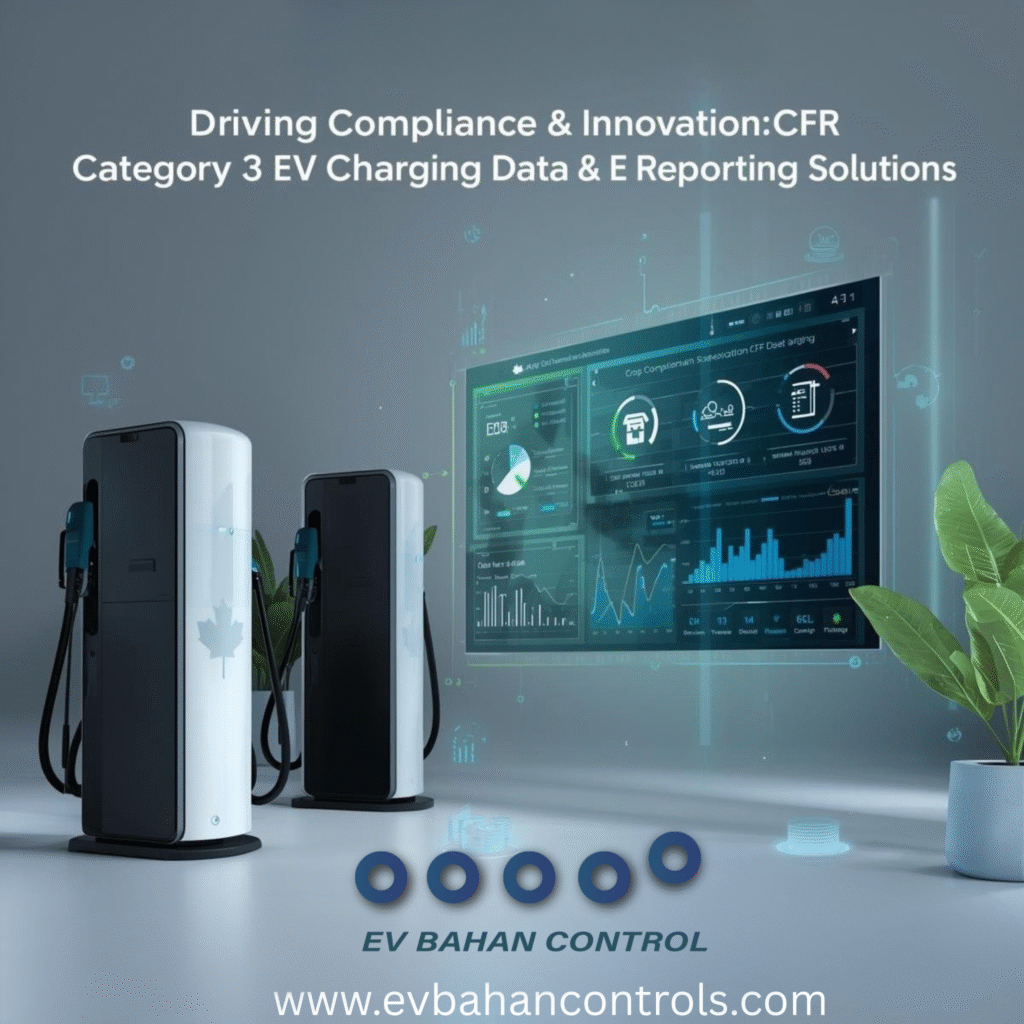As EV sales continue to surge, the demand for efficient, reliable, and scalable charging infrastructure is at an all-time high. EV Charging Software is the backbone of modern EV charging networks, enabling seamless operations for Charge Point Operators (CPOs), fleet managers, and EV drivers. At EV Bahan Controls, our EV Charging Software Solutions empower stakeholders to manage charging stations, optimize energy consumption, and drive the Future of EV charging. But how exactly does EV Charging Software work, and what makes it essential for the Electric Vehicle Revolution? In this blog, we’ll dive into the mechanics of EV Charging Software, exploring its core components, functionalities, and benefits. From Smart EV Charging Solutions to Dynamic Load Management (DLM) and EV Fleet Management Software, we’ll break down how our platform integrates with application programming interfaces (APIs) and the Open Charge Point Protocol (OCPP) to deliver a seamless charging experience. What is EV Charging Software? EV Charging Software is a digital platform that manages and optimizes the operations of Electric Vehicle Charging Stations. It serves as a bridge between charging hardware, users, and operators, providing real-time control, monitoring, and analytics. Our EV Charging Management Software at EV Bahan Controls integrates advanced features like Dynamic Load Management (DLM), payment processing, and user-friendly interfaces to ensure efficient and accessible charging. Think of EV Charging Software as the central nervous system of an EV charging network. It handles everything from locating available chargers to managing energy consumption, ensuring a smooth experience for drivers and profitability for station owners. How Does EV Charging Software Work? EV Charging Software operates through a combination of hardware integration, cloud-based management, and user-facing applications. Here’s a step-by-step breakdown of how it works, drawing on the capabilities of EV Bahan Controls’ Smart EV Charging Solution: 1. Integration with Charging Hardware: EV Charging Software communicates with charging stations using the Open Charge Point Protocol (OCPP), an industry-standard protocol that ensures compatibility across different charger brands and models. This allows our EV Charging Management Software to control and monitor hardware in real-time. 2. Real-Time Data Collection and Monitoring: Through application programming interfaces (APIs), the software collects data on charger availability, energy consumption, and user activity. This data is processed in the cloud, providing real-time insights to both operators and users. 3. User Authentication and Payment Processing: EV Charging Software Solutions streamline user access and payments. Users can authenticate via mobile apps, RFID cards, or QR codes, and pay through integrated gateways. Our platform supports multiple payment methods, ensuring flexibility for drivers. 4. Dynamic Load Management (DLM): Dynamic Load Management (DLM) is a critical feature that optimizes energy consumption by distributing power intelligently across multiple chargers. This prevents grid overload and reduces costs for station owners. 5. Fleet Management Integration: For businesses operating electric vehicles, our EV Fleet Management Software integrates with EV Charging Software to coordinate charging schedules, monitor vehicle status, and optimize costs. This is particularly valuable for logistics companies and ride-sharing services. 6. Analytics and Reporting: EV Charging Management Software provides detailed analytics on charger usage, revenue, and performance. Station owners can use these insights to optimize operations, while fleet managers can track energy consumption and vehicle efficiency. Key Features of EV Bahan Controls’ EV Charging Software Our EV Charging Software is designed to deliver a seamless experience for all stakeholders. Here are the standout features that make our Smart EV Charging Solution a leader in the industry: 1. OCPP Compatibility: Our software supports OCPP 1.6 and 2.0, ensuring compatibility with a wide range of chargers. This hardware-agnostic approach simplifies integration for CPOs and enhances accessibility for users. 2. Scalable API Integration: Our application programming interfaces (APIs) allow seamless integration with third-party systems, such as payment platforms, navigation apps, and fleet management tools. This scalability supports growing EV charging networks. 3. User-Friendly Mobile and Web Apps: Our EV Charging Software Solutions include intuitive mobile and web apps for drivers to locate chargers, reserve slots, and monitor sessions. For operators, a robust dashboard provides full control over station operations. 4. Dynamic Load Management (DLM): Our DLM technology optimizes power distribution, ensuring efficient energy consumption and preventing grid overload. This is critical for stations with high demand or limited power capacity. 5. Comprehensive Fleet Management: Our Fleet Management Software Development integrates with EV Charging Software to streamline charging for commercial fleets. Features include scheduling, cost optimization, and vehicle status monitoring. Benefits of EV Charging Software for Stakeholders EV Charging Software delivers value to all stakeholders in the EV charging network: Why Choose EV Bahan Controls’ EV Charging Software? At EV Bahan Controls, our EV dejamos Management Software is built to lead the Electric Vehicle Revolution. Here’s why our Smart EV Charging Solution stands out: Conclusion EV Charging Software is the cornerstone of modern EV charging networks, enabling seamless operations, efficient energy consumption, and an exceptional user experience. At EV Bahan Controls, our EV Charging Software Solutions leverage OCPP, APIs, and Dynamic Load Management (DLM) to empower CPOs, fleet operators, and drivers. Whether you’re managing a single station or a nationwide network, our EV Charging Management Software and EV Fleet Management Software provide the tools you need to succeed in the Electric Vehicle Revolution. EV Charging Software FAQ 1. Why do EV charging stations need smart software solutions? Smart EV Charging Solutions are essential for managing EV charging networks efficiently. They enable real-time monitoring, optimize energy consumption, and streamline operations for CPOs. For users, smart software simplifies finding chargers, processing payments, and tracking sessions, reducing range anxiety. Without smart software, stations face issues like downtime, inefficient power use, and poor user experiences, hindering the scalability of EV sales. 2. What features should I look for in an EV charging management platform? When choosing an EV Charging Management Software, prioritize these features: 3. What’s the difference between OCPP-compliant software and non-OCPP platforms? Open Charge Point Protocol (OCPP)-compliant software, like ours, adheres to an industry-standard protocol that ensures interoperability between chargers and management systems. This allows CPOs to manage diverse hardware brands seamlessly. Non-OCPP platforms are often










